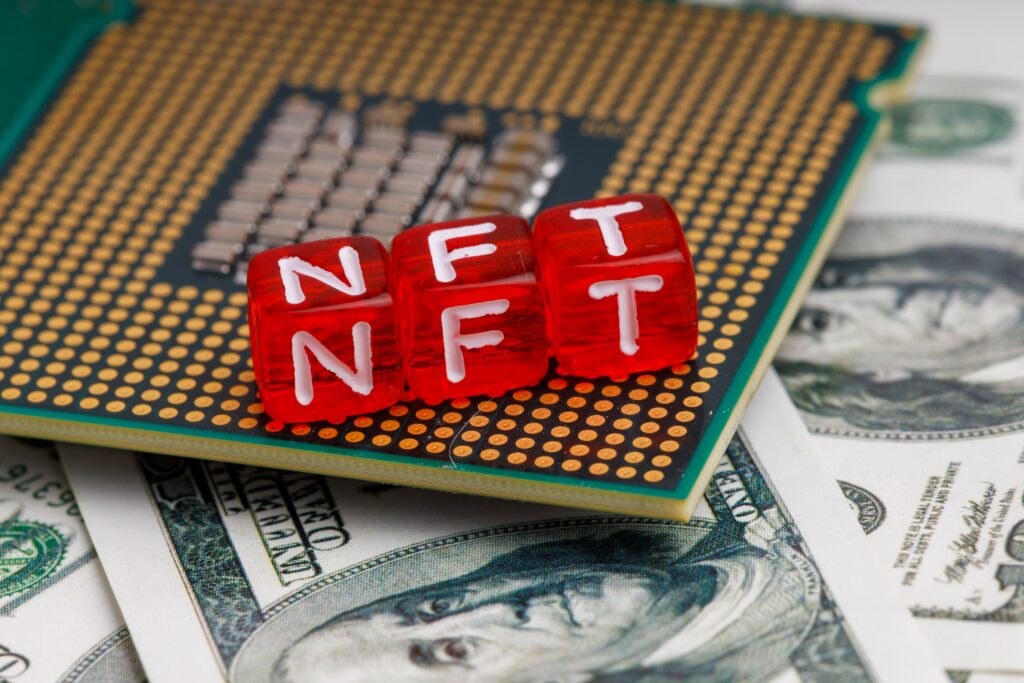Unlocking the Potential of Blockchain Technology in Video Advertising
Understanding Blockchain Technology: Definition and Functionality

Blockchain represents a groundbreaking decentralized ledger technology that methodically captures and documents transactions across a multitude of computers, thus ensuring both security and transparency. This innovative characteristic makes it especially appealing for industries like video advertising, where trust and precision are essential for success. The defining features of blockchain technology encompass:
- Decentralization: This pivotal element removes the need for central authorities, distributing governance throughout the entire network.
- Immutability: Once information is logged, it is permanent and cannot be altered or deleted, ensuring a reliable historical record.
- Transparency: Each transaction is accessible for evaluation by participants, establishing a strong trust foundation among all parties involved.
- Security: Sophisticated cryptographic methods safeguard data from unauthorized access and potential breaches.
- Smart Contracts: These automated agreements execute transactions based on predefined conditions, fundamentally transforming the transactional landscape.
Have a Moment to Listen?
Exploring the Impact of Blockchain on Video Advertising Metrics
The advent of blockchain technology significantly enhances the transparency and operational efficiency of video advertising metrics by creating unchangeable records of ad interactions and views. This enhancement is crucial in an industry that often faces challenges with reporting inaccuracies and widespread fraud. The advantages of employing blockchain for transparency in video advertising include:
- Real-time Tracking: Instantaneous updates on advertising metrics support strategic decision-making processes.
- Immutable Records: Guaranteed data integrity leads to trustworthy and accurate information.
- Reduced Fraud: Advanced security protocols greatly diminish risks associated with advertising fraud.
- Streamlined Payments: Automated transactions based on verified performance metrics eliminate delays in payment processing.
The Importance of Transparency in the Video Advertising Industry
Transparency in video advertising is essential for ensuring that both advertisers and publishers have reliable access to data, promoting trust and optimizing campaign effectiveness. In a landscape where skepticism about metrics from various advertising networks prevails, implementing transparent practices can effectively bridge the gap between expected and actual results. When both advertisers and publishers can access credible data, it enhances targeting, increases engagement, and boosts return on investment.
Expert Insights on Leveraging Blockchain for Enhanced Video Ad Metrics

Transforming Ad Verification Processes with Blockchain Technology
The adoption of blockchain technology holds the potential to revolutionize ad verification processes by providing a tamper-proof record of ad deliveries and interactions. Unlike traditional methods that depend on third-party verifications, blockchain decentralizes the verification process. Companies such as Madnetwork and AdLedger are leading the charge in deploying blockchain-based solutions to automate ad verifications. By recording every interaction on a public ledger, these platforms ensure that advertisers only pay for genuine views, fostering accountability within the advertising ecosystem.
For instance, when an ad is displayed, its interaction data—including impressions and clicks—are recorded on the blockchain in real time. This immediate documentation not only offers real-time insights but also resolves disputes between advertisers and publishers concerning ad performance. Consequently, blockchain significantly enhances the credibility of the advertising sector as a whole.
Identifying Challenges in Implementing Blockchain for Video Advertising
Implementing current blockchain technologies in video advertising comes with various challenges, such as scalability issues and the intricacies of integrating with existing systems. Many organizations encounter difficulties in adopting this technology due to a deficit of knowledge and the technical expertise required for effective integration. To overcome these obstacles, stakeholders should consider the following actionable strategies:
- Education and Training: Invest in comprehensive training programs to equip teams with a solid understanding of blockchain fundamentals.
- Pilot Projects: Initiate small-scale implementations to test efficacy and address any emerging challenges.
- Partnerships: Collaborate with blockchain experts or firms specializing in advertising technology solutions.
- Standardization: Strive to establish industry standards to ensure interoperability among diverse platforms.
By adopting these strategies, organizations can gradually navigate the shift toward implementing blockchain solutions, alleviating initial resistance and ensuring effective integration.
Understanding the Role of Smart Contracts in Video Advertising

Smart contracts are pivotal in automating the execution of agreements between advertisers and publishers. These self-executing contracts, with terms explicitly encoded, streamline processes to ensure that payments are triggered based on verified ad performance metrics. For example, when a specified number of views or interactions is recorded on the blockchain, the smart contract automatically activates the payment to the publisher.
This automation minimizes the requirement for manual verification and processing, thereby reducing administrative overhead and the risk of human error. Furthermore, as smart contracts are immutable, they create a reliable framework that both parties can depend on, enhancing the integrity of all transactions. By utilizing these smart contracts, the video advertising sector can achieve greater efficiency and trustworthiness in financial exchanges.
How Blockchain Enhances Transparency in Video Ad Metrics
Blockchain substantially improves transparency in video ad metrics by providing an unalterable ledger that meticulously tracks these metrics. Every interaction with a video ad—including views, clicks, and engagement metrics—is chronicled on the blockchain, ensuring a comprehensive and transparent record. Companies like Everledger exemplify this capability by employing blockchain to monitor interactions and deliver real-time reporting to advertisers.
Case studies indicate that brands utilizing blockchain technology report heightened confidence in their ad metrics. By implementing blockchain, advertisers can confirm that the views and interactions they are billed for are legitimate, fostering trust among all stakeholders. Additionally, the transparency afforded by blockchain creates a competitive environment where businesses are incentivized to maintain integrity to thrive.
Major Advantages of Implementing Blockchain for Video Ad Metrics
Guaranteeing Data Integrity for Reliable Advertising Metrics
Blockchain technology is crucial in maintaining the integrity of video ad metrics, ensuring they are tamper-proof. Its decentralized nature guarantees that once data is recorded, it remains unchanged and cannot be deleted, providing a trustworthy foundation for advertisers to base their decisions on. This robust data integrity facilitates superior analysis and more effective campaign strategies, allowing advertisers to have confidence in the accuracy of the metrics presented.
Moreover, this integrity is vital for fostering trust between advertisers and publishers. When both parties are assured of the accuracy and reliability of the data, they can collaborate more effectively, leading to improved campaign results and stronger relationships. This trust extends beyond single transactions, ultimately cultivating a healthier ecosystem for video advertising.
Identifying Cost Savings for Advertisers through Blockchain Adoption
Embracing blockchain technology can yield significant cost savings for advertisers by eliminating intermediaries and automating operational processes. By streamlining activities, companies can substantially reduce expenses associated with traditional advertising networks. Specific cost savings include:
- Reduced Fees: The removal of middlemen enables advertisers to retain a larger portion of their budget.
- Lower Transaction Costs: Automated payment systems minimize administrative expenses.
- Efficient Resource Allocation: Enhanced data accuracy allows for more precise targeting, optimizing ad spending.
- Fewer Disputes: Clear records decrease the likelihood of costly disputes regarding ad performance.
By leveraging these cost-saving mechanisms, advertisers can allocate their resources more judiciously, leading to improved overall campaign performance and increased returns on investment.
Strengthening Ad Fraud Prevention through Blockchain Technology
One of the most significant benefits of integrating blockchain technology into video advertising is its ability to bolster ad fraud prevention. The inherent transparency and immutability of blockchain make it exceedingly challenging for fraudulent activities to evade detection. For instance, traditional ad networks often experience inflated view counts generated by bots, resulting in substantial financial losses for advertisers.
With blockchain, every interaction is recorded in a tamper-proof manner, allowing for real-time monitoring and rapid detection of anomalies. If an unusual surge in views is detected, stakeholders can promptly investigate the situation, minimizing the potential impact of fraud. Consequently, advertisers can concentrate their budgets on legitimate interactions, maximizing their return on investment and reinforcing their confidence in the advertising ecosystem.
Supporting Transparency in Video Ad Metrics through Blockchain
Types of Data Recorded on Blockchain in Video Advertising
Blockchain meticulously logs each interaction with a video ad, capturing vital data such as views, clicks, and engagement metrics. This extensive documentation ensures that both advertisers and publishers have access to a thorough and transparent record of ad performance. Not only does this strengthen accountability, but it also supports data-driven decision-making, enabling stakeholders to analyze the effectiveness of their campaigns in real time.
Moreover, the capacity to access detailed historical data empowers retrospective analysis, allowing advertisers to refine their strategies based on past performance trends. Armed with this information, they can make informed adjustments and invest in high-performing ads, further enhancing their marketing effectiveness.
Verification Processes for Data on the Blockchain
Data on the blockchain is verified through consensus mechanisms that ensure all parties agree on the legitimacy of the metrics. The verification process varies based on the blockchain protocol in use, but it typically involves multiple nodes validating the data before it is added to the ledger. This decentralized approach enhances the reliability of the recorded data and significantly reduces the risk of manipulation.
The consensus mechanisms utilized by blockchain networks, such as Proof of Work or Proof of Stake, necessitate that a majority agree on the authenticity of the data before its inclusion. This collaborative verification fosters a trustworthy environment in which all stakeholders can confidently rely on the metrics reported to them, leading to more informed decisions and higher campaign success rates.
Benefits for Publishers Implementing Blockchain Technology
Publishers can gain substantial advantages from adopting blockchain technology in video advertising. By ensuring fair compensation for ad placements, they can rely on transparent metrics to negotiate better deals with advertisers. This transparency not only builds trust with advertisers but also encourages a more equitable advertising ecosystem.
Additionally, the reliability of data allows publishers to optimize their inventory management and enhance their overall performance. With precise insights into their ad metrics, they are equipped to make informed decisions about which ads to prioritize, ultimately resulting in increased revenue and more fruitful partnerships.
Combating Ad Fraud with Blockchain’s Immutable Ledger
The immutable ledger and consensus mechanisms of blockchain play a critical role in preventing ad fraud. By documenting every transaction and interaction on a decentralized network, it becomes significantly more challenging for fraudulent activities to remain undetected. For instance, if an ad network reports inflated view counts, stakeholders can analyze the data on the blockchain to identify the source of any discrepancies.
This increased transparency ensures that advertisers pay only for legitimate interactions, drastically reducing the financial losses associated with ad fraud. By creating a trustworthy environment, blockchain technology empowers both advertisers and publishers to collaborate more effectively, unlocking new growth opportunities.
The Significance of Smart Contracts in the Video Advertising Ecosystem
Smart contracts are foundational to the framework of blockchain technology in video advertising. These automated contracts execute agreements based on predefined conditions, ensuring that payments are made only when specific performance metrics are satisfied. This automation mitigates potential risks, and the stipulated terms protect both parties, ensuring adherence to the established conditions.
For example, if an advertiser commits to compensating for ad impressions, the smart contract only releases payment once the data indicates that the agreed-upon number of impressions has been achieved. This streamlining of the payment process instills confidence in both advertisers and publishers that they are engaging in fair practices.
Research-Driven Benefits of Blockchain for Transparent Video Ad Metrics
Research Findings Illustrating Blockchain’s Impact on Video Advertising
Research indicates that blockchain significantly enhances the accuracy and reliability of video ad metrics. Studies conducted by industry leaders reveal that organizations utilizing blockchain solutions report improved transparency and heightened confidence in their data. These insights highlight the transformative potential of blockchain technology in fundamentally reshaping how video advertising metrics are tracked and reported.
Additionally, expert evaluations suggest that by providing a single source of truth, blockchain reduces discrepancies and disputes, facilitating smoother interactions among all participants. This shift towards transparency enables advertisers to leverage verified data to drive superior marketing strategies, ultimately leading to enhanced campaign outcomes.
Efficiency of Ad Spend Enhanced by Blockchain
Blockchain improves ad spend efficiency by ensuring that advertisers only pay for verified ad views and interactions. This efficiency stems from the transparent nature of blockchain, which captures every ad interaction in real time. By eliminating unnecessary expenditures on fraudulent views, advertisers can allocate their resources more accurately.
As a result, blockchain technology empowers advertisers to optimize their campaigns based on real-time data, thereby increasing the effectiveness of their investments. Enhanced efficiency encourages a focus on impactful strategies, allowing advertisers to create effective ads and campaigns that reduce overall costs while maximizing impact.
Long-Term Advantages of Blockchain in the Advertising Industry
The long-term benefits of integrating blockchain technology into the advertising sector include heightened trust, reduced fraud, and a more efficient ecosystem. As confidence in data accuracy increases, organizations are likely to experience improved collaboration and innovation. This transformation will pave the way for enhanced targeting capabilities, better user experiences, and ultimately, a more sustainable advertising environment.
Moreover, as blockchain adoption becomes more prevalent, industry standards will evolve to prioritize transparency and accountability, ensuring that all participants adhere to elevated norms. This collective movement towards integrity will not only enhance the reputation of the advertising industry but will also increase the value of genuine engagements, setting the stage for future growth.
Strategic Approaches for Implementing Blockchain in Video Ad Metrics
Seamless Integration of Blockchain with Existing Advertising Systems
Integrating blockchain with current advertising technology systems necessitates careful planning and execution to ensure compatibility and operational efficiency. To achieve successful integration, organizations should assess their existing infrastructure and identify components that can be upgraded or replaced with blockchain solutions. Key steps include:
- Conducting a Needs Assessment: Identify current challenges and determine how blockchain can effectively address them.
- Building a Cross-Functional Team: Assemble a diverse team of blockchain specialists and ad tech professionals to guide the integration process.
- Choosing the Right Blockchain Platform: Select a blockchain solution that aligns with the organization’s specific needs and objectives.
- Testing and Iteration: Implement pilot projects to assess integrations and improve processes before full-scale deployment.
This systematic approach ensures that the integration process is both seamless and effective, resulting in successful implementation and enhanced outcomes.
Best Practices for Successful Blockchain Adoption in Video Advertising
The adoption of blockchain technology in video advertising should follow best practices to maximize impact and reduce disruption. Initiating pilot projects allows stakeholders to test concepts in a controlled environment, gathering insights that can shape broader implementation strategies. Furthermore, educating stakeholders on blockchain principles fosters understanding and acceptance.
Gradually scaling up blockchain adoption following successful pilot projects is another effective strategy. This phased approach allows organizations to identify challenges and solutions in real time, ensuring a smooth and comprehensive transition.
Complementary Technologies to Enhance Blockchain Functionality
Technologies such as AI and machine learning can substantially enhance blockchain by improving data analysis and automation capabilities. AI can process vast datasets, identifying patterns that inform advertising strategies, while machine learning algorithms can automate decision-making processes based on real-time data.
By integrating these technologies with blockchain, organizations can create a more robust advertising ecosystem. For example, employing analysis of data recorded on the blockchain enables deeper insights into consumer behavior, allowing for more targeted advertising strategies. This synergy between technologies not only increases operational efficiency but also enhances the effectiveness of video ad campaigns.
Emerging Trends in Blockchain and Video Ad Metrics
Future Evolution of Blockchain in Video Advertising
Blockchain is expected to achieve deeper integration within the video advertising landscape, with advancements in scalability and interoperability paving the way for broader adoption. As organizations continue to explore its potential, we can anticipate improvements in speed and efficiency that will enable more sophisticated applications of blockchain technology.
Additionally, as the demand for transparency and accountability grows, blockchain is likely to become crucial in the advertising ecosystem. This evolution will encourage stakeholders to adopt a more comprehensive approach to measuring ad performance, ultimately leading to a more sustainable and effective marketplace.
New Opportunities Emerging from Blockchain Adoption
The rise of blockchain technology in video advertising offers numerous new opportunities, such as enhanced precision in ad targeting, improved cross-platform tracking, and increased user privacy. By leveraging blockchain’s transparent nature, advertisers can gain profound insights into consumer behavior, enabling more personalized and effective strategies. Furthermore, blockchain can assist advertisers in complying with privacy regulations by maintaining user consent through secure data management practices. This adaptability will allow companies to navigate regulatory changes effectively while continuing to deliver value to their customers.
Preparing Advertisers for Upcoming Trends in Blockchain
Advertisers can ready themselves for emerging trends by staying informed about blockchain advancements and experimenting with new technologies. Engaging in educational opportunities, such as workshops and conferences, facilitates a better understanding of blockchain’s implications for advertising strategies. Moreover, collaborating with blockchain experts and technology providers can streamline transitions and foster more effective implementations.
Finally, maintaining agility and adaptability will be crucial for navigating the rapidly evolving landscape. By consistently evaluating and refining their strategies in response to technological advancements, advertisers will position themselves for success in an increasingly competitive environment.
Transformations in Video Ad Metrics with Blockchain Integration
With the adoption of blockchain technology, video ad metrics are set to become increasingly transparent and accurate. Blockchain enables real-time data verification, allowing stakeholders to monitor performance and identify discrepancies as they arise. This enhanced accuracy will result in more informed decision-making, empowering advertisers to optimize their campaigns based on trustworthy metrics.
As the industry shifts towards greater transparency, we can also anticipate a change in how stakeholders interact with ad metrics, emphasizing collaboration and shared accountability. This transformation will redefine the advertising landscape, fostering trust and promoting sustainable practices across the sector.
The Lasting Impact of Blockchain on Video Ad Metrics
Key Takeaways Regarding Blockchain’s Role in Video Advertising
Our examination reveals that blockchain can greatly enhance the transparency and efficiency of video ad metrics. By providing immutable records and real-time data access, blockchain fosters accountability among all stakeholders, leading to more effective advertising strategies and outcomes.
As we continue to explore the potential of this technology, it becomes apparent that its integration into video advertising will result in significant changes in how metrics are tracked and reported, paving the way for a more trustworthy environment.
Benefits for Advertisers and Publishers from Blockchain Adoption
Both advertisers and publishers stand to gain immensely from the implementation of blockchain technology. Enhanced transparency nurtures trust, significantly mitigating discrepancies between reported metrics and actual performance. Additionally, the increased reliability of data empowers stakeholders to make informed decisions, resulting in more successful campaigns and collaborative partnerships.
This mutually beneficial environment encourages collaboration and innovation, laying the foundation for a more sustainable advertising ecosystem.
Next Steps for Advancing Blockchain in Video Advertising
The subsequent steps for the industry include ongoing research, pilot projects, and a gradual embrace of blockchain technology within video advertising. Stakeholders should prioritize education and training to ensure a seamless transition, equipping teams with the skills necessary to navigate this evolving landscape.
By collaboratively implementing blockchain solutions, companies can foster a culture of transparency and accountability, unlocking new opportunities for growth and success in the video advertising domain.
Frequently Asked Questions About Blockchain in Video Advertising
What is blockchain technology?
Blockchain technology is a decentralized ledger system that meticulously records transactions across multiple computers, ensuring data integrity and security.
How does blockchain enhance ad verification?
Blockchain improves ad verification by providing a tamper-proof record of every ad interaction, ensuring advertisers only pay for legitimate views.
What challenges exist with blockchain implementation?
Challenges include scalability, integration with existing systems, and effectively implementing blockchain solutions.
What are smart contracts?
Smart contracts are automated agreements that execute transactions based on predefined conditions, significantly increasing efficiency in advertising payments.
How does blockchain improve transparency in video ad metrics?
Blockchain creates an immutable ledger for recording ad interactions, ensuring that all stakeholders have access to accurate and reliable data.
What are the cost-saving benefits of blockchain?
Cost savings include reduced fees from eliminating intermediaries, lower transaction costs, and improved resource allocation due to enhanced data accuracy.
How can blockchain prevent ad fraud?
By providing a transparent and immutable record of ad interactions, blockchain makes it exceedingly difficult for fraudulent activities to remain undetected.
What data does blockchain record in video advertising?
Blockchain captures every interaction with video ads, including views, clicks, and engagement metrics, ensuring a comprehensive and transparent record.
How can advertisers prepare for blockchain adoption?
Advertisers can prepare by staying informed about blockchain developments, engaging in educational opportunities, and experimenting with new technologies.
What are the long-term benefits of blockchain in advertising?
Long-term benefits include increased trust, reduced fraud, and a more efficient advertising ecosystem that fosters collaboration and innovation.
Explore our world on X!
The Article Using Blockchain for Transparent Video Ad Metrics: A Universal Approach was first published on https://marketing-tutor.com
The Article Blockchain for Transparent Video Ad Metrics: A Global Strategy Was Found On https://limitsofstrategy.com















